MEMS Applications in the Medical Industry

One of the trends in medical devices is to address the growing number of lifestyle-related or non-communicable diseases (NCDs) and the medical challenges of an aging society. One such initiative is point-of-care testing, also known as bedside testing. This is an initiative to perform examinations at the bedside of individual patients, and devices are now available to provide customized medical care tailored to the symptoms and conditions of each patient. Various MEMS devices are being utilized in the development of such medical devices.
- Types and Roles of MEMS Sensors Used in Medical Field
- MinebeaMitsumi’s MEMS Devices Utilized in the Medical Industry
Types and Roles of MEMS Sensors Used in Medical Field
There are thousands of devices that have been certified as medical devices, and the number increases significantly when healthcare devices that have not been certified as medical devices are added to the list. Many of these medical and healthcare devices use MEMS devices, and some, such as blood pressure monitors, have even become common household products.
MEMS devices are used because they are small and can be produced in large quantities with identical performance. For example, devices that are implanted in the body must be small for safety reasons, and MEMS devices offer advantages from this perspective. Also, because of their superior suitability for mass production, MEMS devices tend to be widely used in disposable testing devices to prevent infectious diseases. Due to these advantages, medical applications of MEMS technology are booming.
Role of MEMS Sensors in Non-invasive Healthcare Devices
Non-invasive measurement technology refers to technology that measures biological information without the need for electrodes or needles, and is increasingly being used in the healthcare field. Attempts are being made to use wearable devices to easily measure heart rate, blood pressure, and blood glucose levels.
Most measurement methods are optical, in which LED or laser light of a specific wavelength is read by a light receiving element to detect changes within the skin tissue. The sensors used for reading are packaged MEMS devices. The integration of multifunctional MEMS has led to miniaturization and low power consumption, enabling the development of devices in a variety of forms, such as wristwatch and headset types.
MEMS sensors are also being used in the management of indoor and outdoor air quality, which has been the focus of much attention in recent years from the standpoint of preventing infectious diseases and respiratory illnesses. MEMS devices used in various applications are becoming essential in the medical and healthcare fields, such as in systems that measure CO2 concentration to provide ventilation and in systems that measure and alert the user to minute particles in the air, such as PM2.5.
MEMS Devices Used in Testing
One of the most popular MEMS sensors used in medical devices is the MEMS pressure sensor used for pressure detection in blood pressure meters. Also, many MEMS devices are being used to facilitate telemedicine and remote medical examinations in response to the growing trend toward clinical point-of-care in recent years.
MEMS devices are being incorporated in a wide range of medical devices, such as heartbeat checks using a MEMS microphone, asthma examinations using a MEMS flow sensor, and monitoring of chronic obstructive pulmonary disease (COPD).
The reason for this is that MEMS devices can be made smaller and consume less power, allowing the use of sensors and other devices necessary for treatment without placing a heavy burden on the patient’s body. Furthermore, since devices with the same performance can be mass-produced, they can be disposable, helping to protect patients from infectious diseases.
The addition of communication functions to devices previously used only in hospitals has made it possible to use these devices at home, bringing the expansion of medical care in remote and underserved areas closer to reality.
Microfluidic devices based on MEMS technology are also used as disposable components in specimen testing, including PCR testing. In particular, DNA sequencers for genetic analysis are taking advantage of one of the features of MEMS, namely, the ability to mass-produce the same quality products, for contributing greatly to lower costs for devices.
MinebeaMitsumi’s MEMS Devices Utilized in the Medical Industry
MinebeaMitsumi contributes to advances in medical equipment that is expected to be widely used in the future, such as pressure sensors used in blood pressure meters and flow sensors used in ventilators.
Pressure Sensors Used in Blood Pressure Meters
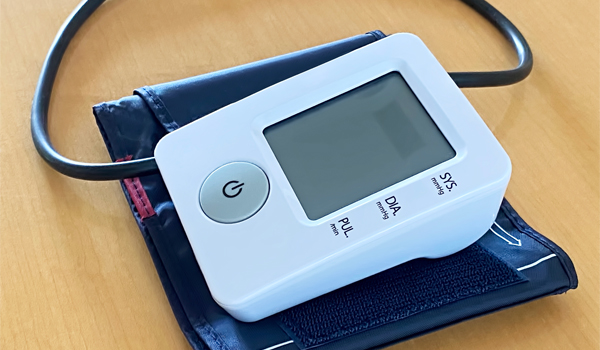
Because of its role as a provider of pressure sensors for major blood pressure meters, MinebeaMitsumi has established production bases in Japan and overseas, and among these sensor products, our MEMS gage pressure sensors are used in a number of blood pressure meters.
These pressure sensors combine a MEMS sensor and a control IC (AD converter) in a single package, which reduces the adjustment process when mounting the sensor. This design also has the advantage of reducing peripheral circuits and eliminating the need for an AD converter in the microcontroller.
An analog output type is also available for systems that have a control IC (AD converter) on the system side.
In addition to pressure sensors, we also manufacture and sell pump motors for blood pressure meters.
Since the motors are fully adjusted at the factory, no manual adjustment by the customer is required.
We are also expanding our control IC (AD converter) lineup by utilizing our existing control IC (AD converter) technology.
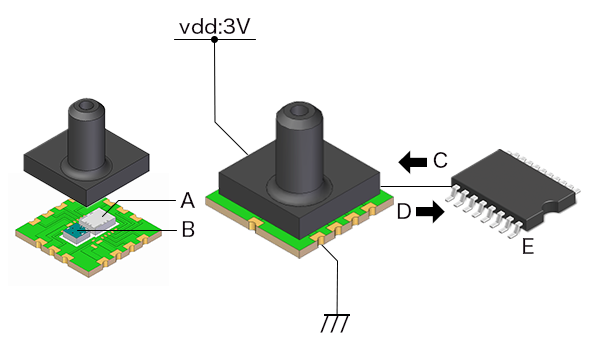
- A: Sensor control IC
- B: MEMS pressure sensor
- C: Command
- D: Digital data (temperature/pressure)
- E: Low-performance microcontroller
Diagram of MEMS pressure sensor
Flow Sensors Used in Ventilators
Diseases such as chronic obstructive pulmonary disease (COPD) and sleep apnea syndrome (SAS) are expected to affect growing numbers of patients in the future, partly due to air pollution and lifestyle changes.
The shortage of ventilators from the COVID-19 pandemic has also drawn attention to the emergency approval of continuous positive airway pressure (CPAP) therapy devices used for SAS in some areas as a substitute.
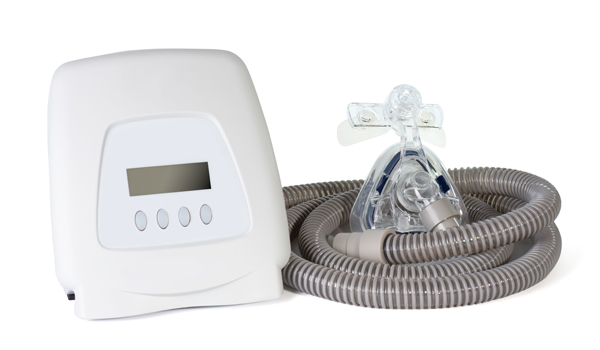
Various types of equipment are used in respiratory-related treatment, including CPAP devices, ventilators, oxygen concentrators, and spirometry equipment (vital capacity measurement, forced vital capacity measurement). Flow sensors are also used to check air flow from the lungs, and their applications are expanding as important sensors that can also be critical for human life.
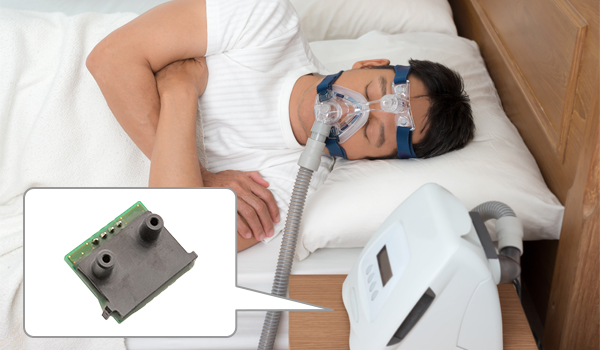
MinebeaMitsumi’s flow sensor accurately measures the gas flow rate required for proper CPAP operation.
Other medical devices utilizing flow sensors
-
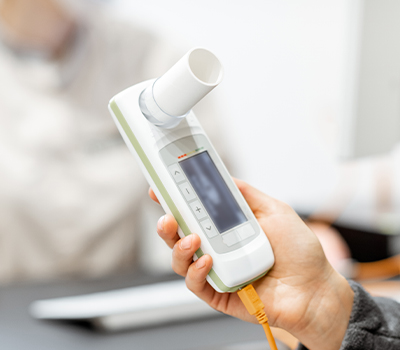
Spirometer -
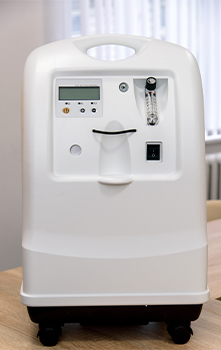
Oxygen concentrator -
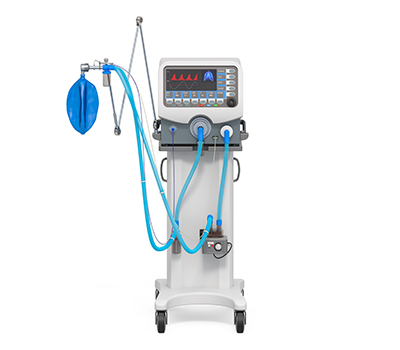
Ventilator
